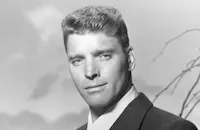Established star Lancaster, who loved to mentor younger talent, took the relative novice Pollack under his wing and helped him learn and grow as a filmmaker. The two met on the set of The Young Savages (1961), when the 26-year-old future director was hired as an acting coach to a group of non-professionals playing gang members. A friendship developed over the years, and after Pollack had established his credentials with two feature film successes, The Slender Thread (1965) and This Property Is Condemned (1966), actor and director began looking for a project they could collaborate on. Lancaster "fell crazy in love" with the surreal, black humor of Eastlake's book, according to Pollack, and decided that would be their joint venture. But because Pollack had yet to prove himself with large-scale action and location shooting, producer Martin Ransohoff refused to hire him. Lancaster and Pollack agreed to shoot another movie, The Scalphunters (1968), with the understanding if the first two weeks of dailies met with Ransohoff's approval, Pollack would be entrusted with the large cast and $8 million budget of Castle Keep.
Once on location deep in a Yugoslavian forest, Pollack learned just what a picture of this scale meant. What was supposed to have been a three-month shoot beginning in March 1968 stretched six months through the summer. After a lot of winter footage was in the can, the weather turned unseasonably hot, melting the snow and bringing buds out on the trees. Cinematographer Henri Decae, famous for his work on Francois Truffaut's The Four Hundred Blows (1959), refused to go on, insisting the scenes wouldn't match, and had to be persuaded to shoot at night with marble dust filling in for the long-gone snow. Lee Zavits, the film's special effects director, took an intense dislike to the central set piece, a million-dollar 10th century "castle" made out of Styrofoam, and kept threatening after a few drinks to blow it up. Zavits never intentionally took that step, but while the climactic fire scene was being set up, some gasoline in the moat went up in flames and set the structure ablaze sooner than planned. Luckily, Decae captured the conflagration on film, but the castle had to be completely rebuilt to shoot two more scenes.
In spite of the production woes, actor and director were happy with the outcome. Critics found the film's dark humor and anti-heroic tone bizarre, but respect for the picture has grown over the years. What emerges most strongly from the film now is the culture clash between Old World and New. The sense of American practical can-doism for the present and future versus European decadence and attachment to the past is best summed up in an exchange between two of the soldiers. "Europe is dying," says the captain played by Patrick O'Neal. "No, Beckman, she's dead," replies Lancaster's Major Falconer. "That's why we're here."
Director: Sydney Pollack
Producers: Martin Ransohoff, John Calley
Screenplay: Daniel Taradash, David Rayfiel, based on the book by William Eastlake
Cinematography: Henri Decae
Editing: Malcolm Cooke
Music: Michel Legrand
Cast: Burt Lancaster (Major Abraham Falconer), Peter Falk (Sgt. Orlando Rossi), Jean-Pierre Aumont (Comte de Maldorais), Patrick O'Neal (Capt. Lionel Beckman), Scott Wilson (Cpl. Ralph Clearboy), Tony Bill (Lieutenant Amberjack), Al Freeman, Jr. (Private Benjamin), Bruce Dern (Lt. Billy Byron Bix), Michael Conrad (Sgt. De Vaca).
C-108m. Letterboxed.
By Rob Nixon






















